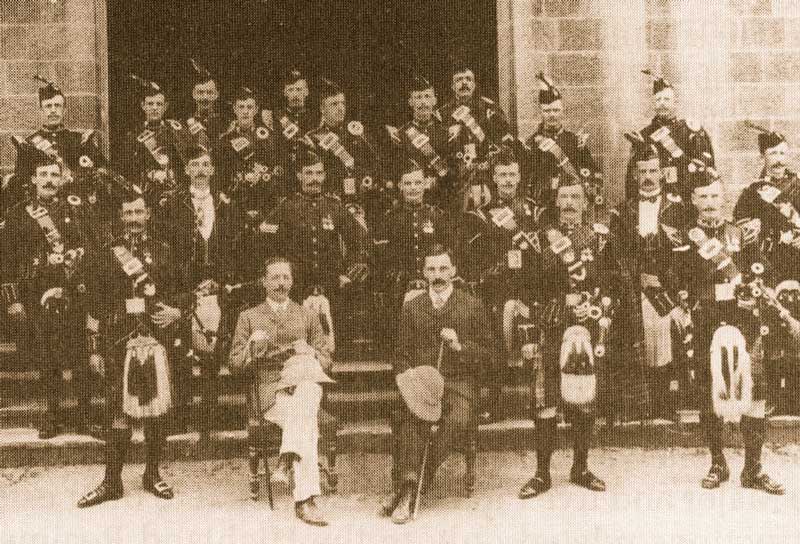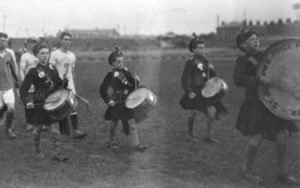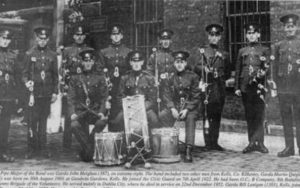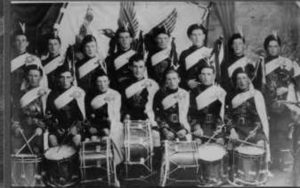The Story behind the tune ‘KILLALOE’
Killaloe is a popular march in the Irish Regiments of the British army . The following is some of the background to the tune . KILLALOE was written around 1887 by a 41-year-old Irish composer named Robert Martin, for the London Musical “Miss Esmeralda” and sung by a Mr E J Lohnen. The lyrics relate the sorry story of a French teacher attempting to make himself understood to a difficult Killaloe class who, totally misunderstand his French, and as a consequence beat him up I
The “Killaloe” song, with original melody in 2/4 time, was made well known in military circles by a cousin of Lt. Charles Martin, who served with the 88th Connaught Rangers (The Devil’s Own) from 1888 until his death in 1893. He composed a new set of lyrics, in 6/8 time, celebrating his Regiment’s fame, and although no mention is made of the tune in the Regimental history, there is an interesting explanation which may well account for the shout or yell in the military version of “Killaloe”.
In the lst. Battalion (Connaught Rangers), formerly the 88th, a favourite march tune was “Brian Boru” and this was played generally when the Battalion was marching through a town, or when after a hot and heavy march, the Battalion was feeling the strain and the Commanding Officer wished to revive the spirits of the men.
On such occasions, at a time generally given by the Sergeant-Major, all ranks would give a regular “Connaught Yell”. during which the Band would make a pause, and then continue playing.
The “KILLALOE” march became popular among the other Irish Regiments and various other sets of lyrics were devised, some none too complimentary in tone.
The first known recording of Killaloe was made by Richard Dimbleby when serving as a BBC war correspondent somewhere in North France in 1939/1940, shortly before Dunkirk, during an outside broadcast of advancing troops. The “Famous Irish Regiment” Dimbleby reports playing as they march past Is not actually named. but would have been either the Royal Irish Fusiliers or the Royal Inniskilling Fusiliers.
Again in 1944, the BBC recorded The 1st. Battalion, Royal Inniskilling Fusiliers Pipes & Drums playing “Killaloe”, by then adopted unofficially as the march of the famous 38th (Irish) Brigade, during the approach to Cassino.
Killaloe was adopted by The Royal Irish Regiment on formation on lst. July 1992 .



